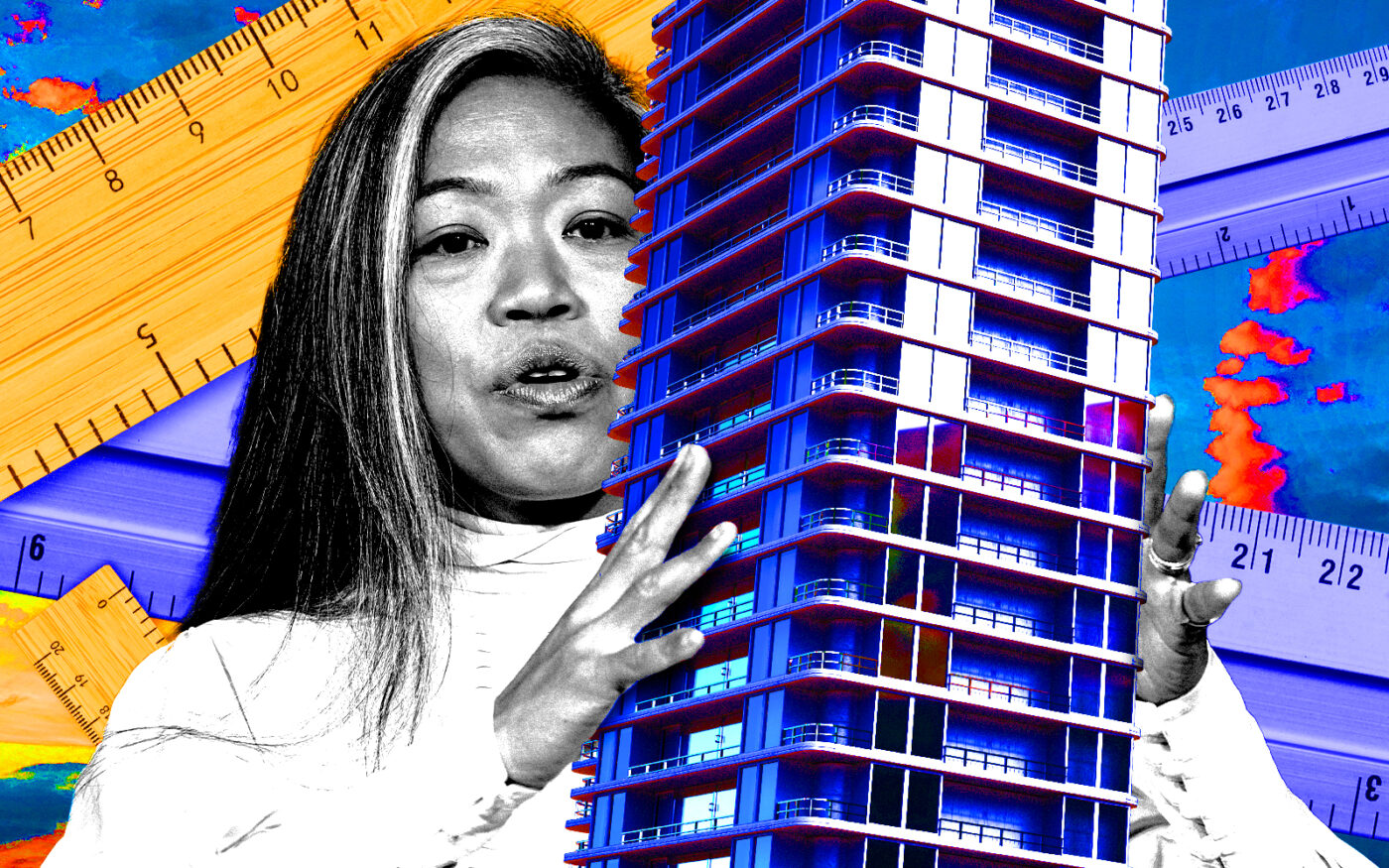The Adams administration is moving to create districts that allow larger residential buildings. But it needs the state to get on board.
Deputy Mayor Maria Torres-Springer announced on Thursday that the administration would push for two new districts with higher residential density as part of its City of Yes for Housing Opportunity text amendment.
The districts would allow projects to include residential space that exceeds the current floor-area ratio cap of 12, which has been in place since 1961. Specifically, they would permit construction of residential buildings 15 or 18 times larger than their lot size (an FAR of 15 or 18).
To take advantage of the change, project sites or neighborhoods would need to be rezoned and go through the land use review process. That would trigger a requirement for permanently affordable housing under the city’s Mandatory Inclusionary Housing law.
The proposal faces a number of hurdles. For one, the state controls the city’s residential FAR cap. The legislature is considering lifting it as part of ongoing budget negotiations, but might well refuse as it did in 2015, 2016, 2018 and again last year, despite requests from Mayor Eric Adams and Gov. Kathy Hochul. Several Manhattan and Brooklyn legislators oppose the idea of more residential towers.
The housing proposal, however, is less controversial than some others, including good cause eviction and replacing the property tax break 421a. The state Senate, in fact, included raising the FAR cap in its one-house budget resolution.
Still, because lawmakers are aiming to put all the housing reforms into a single legislative package, failure to reach an agreement would likely mean that not a single one is approved this year.
Torres-Springer said the city-level change would give the city a “head start” in the event the state lifts the cap. She struck a hopeful note about state-level action on housing this year, saying there is a “growing consensus” about solutions to the city’s housing crisis. Momentum for housing policies is “building to a crescendo,” the deputy mayor said.
Torres-Springer proposed the new residential districts at an Association for a Better New York breakfast. The City of Yes text amendment would not include specific districts, but in a press release, the Adams administration highlighted Midtown Manhattan as a prime opportunity for increasing residential density.
Other options include areas already zoned for high residential and commercial density, including Long Island City, Downtown Brooklyn and Lower Manhattan.
Aside from state action, the changes would also rely on approval by the City Council of the text amendment. Speaker Adrienne Adams has indicated that the chamber supports lifting the cap.
Read more



Torres-Springer said the conversations in Albany this year are more substantial than last year. She said the changes to the City of Yes text amendment is part of the administration’s efforts to “try to take control of our own destiny.”
“But we do need Albany to act,” Torres-Springer told reporters after the event. “We are trying to take away every excuse that we’re not ready, that we’re not committed to deeply affordable by laying down the foundation.”
The City of Yes for Housing text amendment also seeks to eliminate the city’s Sliver Law and parking requirements for new residential construction, allow more flexibility to transfer air rights, give developers a 20 percent density bump for adding senior housing and ease office-to-residential conversions.
During her speech, Torres-Springer underscored the need for the state to replace the property tax break 421a and allow the city to legalize basement apartments.
“The only thing we can’t do is end this session without the incentive,” she said. The state legislature is scheduled to adjourn for the year on June 6.




